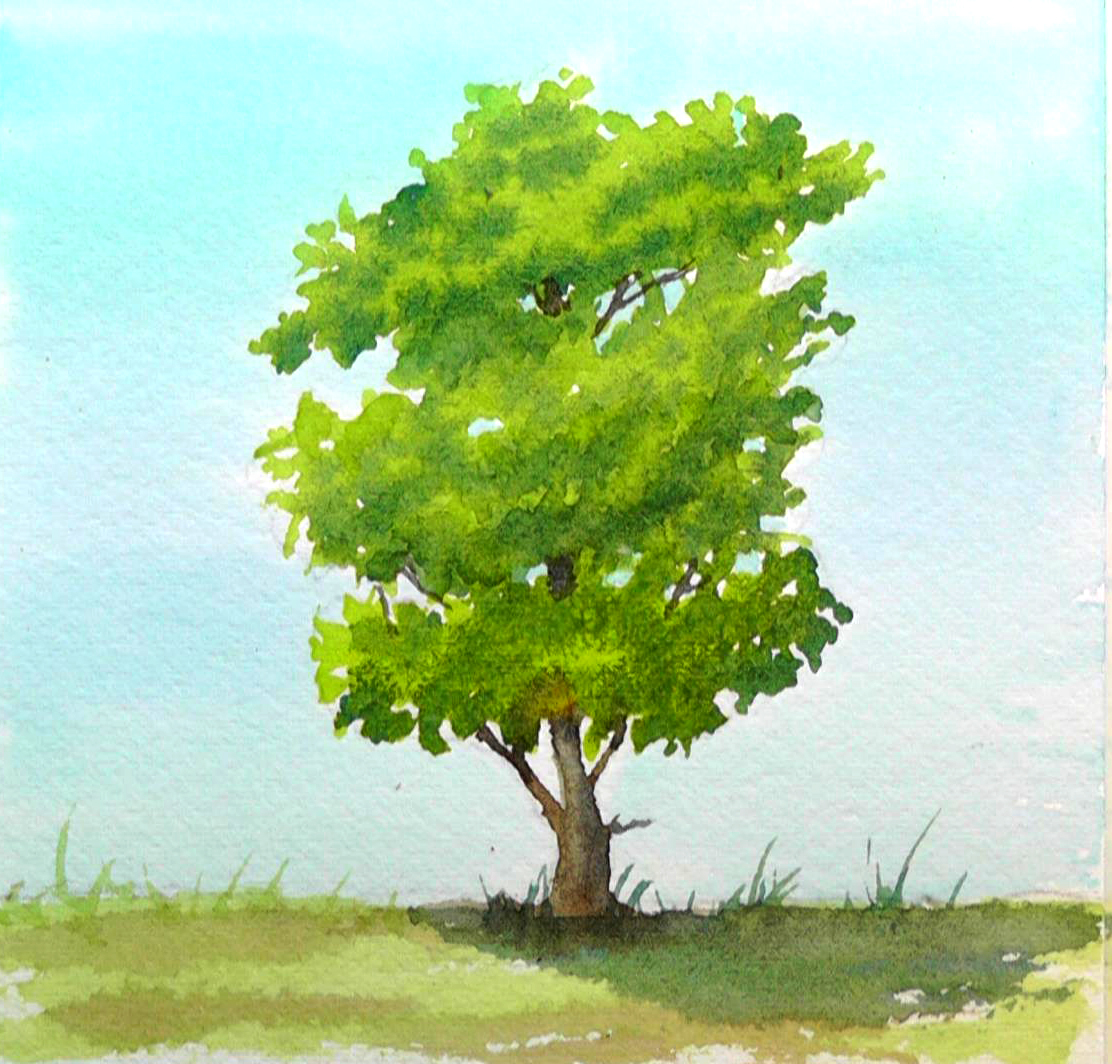During my years of teaching watercolor, I used a critical eye to evaluate my own teaching methods and refine them to be the best they could be. I have tried to incorporate the key elements from years of research and experience into this course. Here are the key features, and if you want the details, you can read the excerpt that follows them:
-
We start by painting no-pressure, small paintings, approximately 4 X 4″, and then gradually build to larger compositions.
-
The curriculum and pacing have been painstakingly designed to proceed in a logical manner that challenges the student, but keeps it fun and interesting.
-
Materials and theory are presented along the way, rather than all at once. We start with basic supplies and theory, and more supplies and theory are added throughout the course as we advance.
-
Exercises, drills, and abstract theory are kept to a minimum. We paint realistic pictures as soon as basic supplies and skills are presented. More advanced theory is introduced in small doses, along the way.
-
The lessons are purposely designed to be fun and varied, to make the learning process enjoyable.
On my journey learning watercolor, I was constantly using my background in science to evaluate what teaching methods worked and did not work. I spent countless hours experimenting with painting techniques, teaching methods, paint tests, paper tests, brush tests, and every other aspect related to learning watercolor. Here are the ideas that I have identified as being keys to good instruction.
-
A major problem with most art courses is that they start the learner painting full-size compositions. To me, this is like asking a piano student to start learning piano by playing a Mozart sonata. You should learn to paint by starting small. This focuses the learning on just one or two key ideas, and if you mess up, it’s no big deal; you just have about 10 minutes invested into it. You just start over and do another one. Not only does this take away pressure on the learner, but it almost ensures repetition, which is key to learning anything. The way I finally learned, and the way that has been proven to work, is to start with miniature paintings, no more than 5 X 5″, and slowly work your way toward larger compositions. Also the learner needs to focus on just a few new ideas and skills per lesson.
-
Another common mistake made in a typical art course is that there is little thought that goes into when and how ideas and skills will be taught. The result is a half-hazard, arbitrary presentation of these ideas and skills just whenever the teacher happens to think about it. For efficient learning, there must be a well designed curriculum.
-
I’m not sure why, but most art teachers seem to give students gobs of information and theory at the beginning of a course, and then go paint. Sort of, “Here are all of the supplies you will ever need, and here are all of the terms and ideas you will ever use. Now, remember all of this as we paint everything.” This may sound ridiculous, but sadly, it is true. Every good instructor knows that ideas and skills must be presented in small stages, then the learner needs time to practice those few ideas before moving on.
-
The final idea is that learning must be enjoyable. This may sound obvious, but for some reason it is neglected in many art courses, especially at the academic area. Ask 10 art students what they did for the first quarter of their art class, and over half of them will say they did drills, exercises, and abstract conceptual works. I firmly believe that one of the reasons so many people give up learning to paint is because they are being asked to do drills, exercises, and abstract works for far too long. Most people want to paint pictures, not do drills. Now, before I sound like a hypocrite, let me say that exercises not only have their place, but are absolutely necessary. In fact, there are some of them in this course. But I think they have to be used sparingly, and only for absolutely critical ideas.
I designed this teaching method in this course to address all of these ideas, and here are the features that I felt did this:
-
We start by painting no-pressure, small paintings, approximately 4 X 4″, and then gradually build to larger compositions.
-
The curriculum and pacing have been painstakingly designed to proceed in a logical manner that challenges the student, but keeps it fun and interesting.
-
Materials and theory are presented along the way, rather than all at once. We start with basic supplies and theory, and more supplies and theory are added throughout the course as we advance.
-
Exercises, drills, and abstract theory are kept to a minimum. We paint realistic pictures as soon as basic supplies and skills are presented. More advanced theory is introduced in small doses, along the way.
-
The lessons are purposely designed to be fun and varied, to make the learning process enjoyable.




